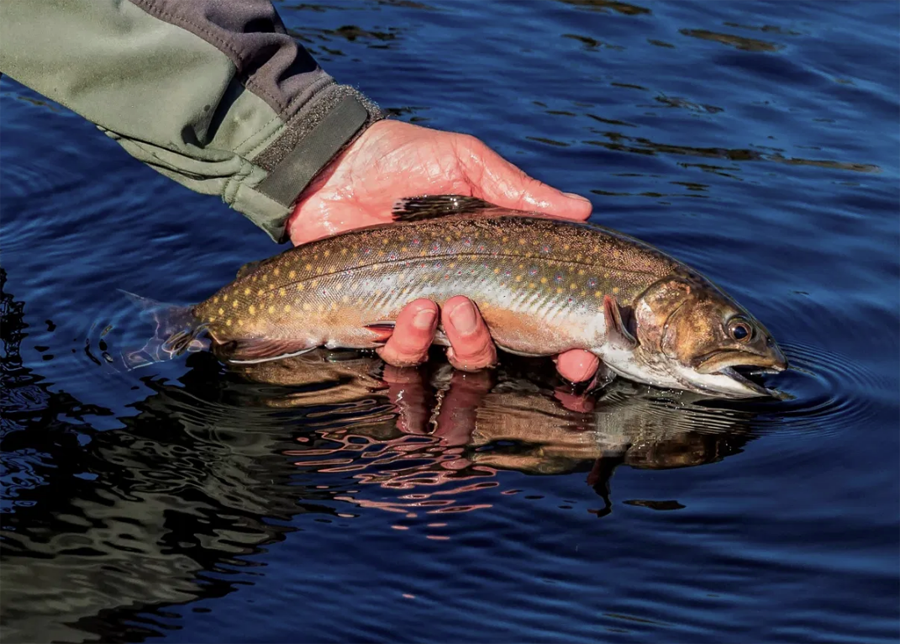
Maine has plenty of ponds that hold brook trout like this one. Credit: Courtesy of Diana Mallard
Everything you need to know about Maine’s brook trout
By Bob Mallard / Outdoors Contributor – Bangor Daily News / December 15, 2020
No species of fish is more synonymous with Maine than brook trout. And you could argue that none is more important to the state. Brook trout are to interior Maine what lobster are to the coast, and as much a part of the North Maine Woods brand as moose and loons.
Brook trout are fascinating fish. Maine is blessed to have several different lifeforms of brook trout. Brook trout are important to Maine, and Maine is important to brook trout. We need to do everything we can, and more than we are doing, to ensure that these unique wild native fish remain viable for generations to come.
Before engaging in conservation-focused topics in future columns, a brief primer on brook trout is in order

This book was well reviewed – a great Christmas gift.
Originally referred to as Salmo fontinalis by naturalist Samuel Latham Mitchill in 1814, brook trout are now referred to as Salvelinus fontinalis. Salvelinus is a genus, and part of the Salmoninae subfamily of the Salmonidae family. The term fontinalis is Latin for “of or from a spring or fountain,” which refers to the cold, clean water where brook trout are found.
Brook trout are often referred to as eastern brook trout, and occasionally, brook charr, common trout, mud trout, salmon-trout, speckled trout and specs. In Maine they are sometimes called squaretail, especially by older anglers. But the most common nickname, and by far, is “brookie.”
The name brook trout is misleading. Brook trout are actually char, not trout, and more closely related to Arctic charr, lake trout, bull trout, and Dolly Varden than they are brown trout, rainbow trout or cutthroat trout. And brown trout are more closely related to Atlantic salmon and landlocked salmon than brook trout.
Brook trout, are, however, the most “trout-like” species of char, and the most adaptable species of salmonid. They are able to live in tiny mountain freestone streams, spring creeks, meadow brooks, flowages, large rivers, small shallow ponds, deep sprawling lakes, brackish water estuaries and even saltwater.
To read the complete story, click here . . .

